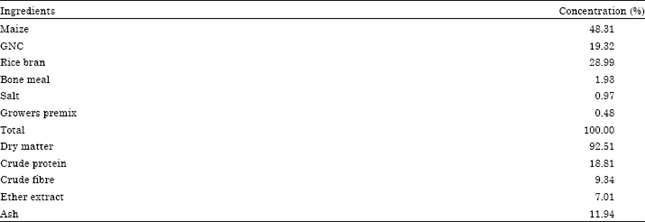Research Article
Physiological Response of West African Dwarf Goats to Oral Supplementation with Omega-3-fatty Acid
Department of Animal Production, Faculty of Agriculture, University of Ilorin, P.M.B. 1515, Ilorin, Kwara State, Nigeria
A.A. Adeloye
Department of Animal Production, Faculty of Agriculture, University of Ilorin, P.M.B. 1515, Ilorin, Kwara State, Nigeria
M.B. Yousuf
Department of Animal Production, Faculty of Agriculture, University of Ilorin, P.M.B. 1515, Ilorin, Kwara State, Nigeria
O.I. Alli
Department of Animal Production, Faculty of Agriculture, University of Ilorin, P.M.B. 1515, Ilorin, Kwara State, Nigeria
M.A. Belewu
Department of Animal Production, Faculty of Agriculture, University of Ilorin, P.M.B. 1515, Ilorin, Kwara State, Nigeria
O.A. Adeyina
Department of Animal Production, Faculty of Agriculture, University of Ilorin, P.M.B. 1515, Ilorin, Kwara State, Nigeria











